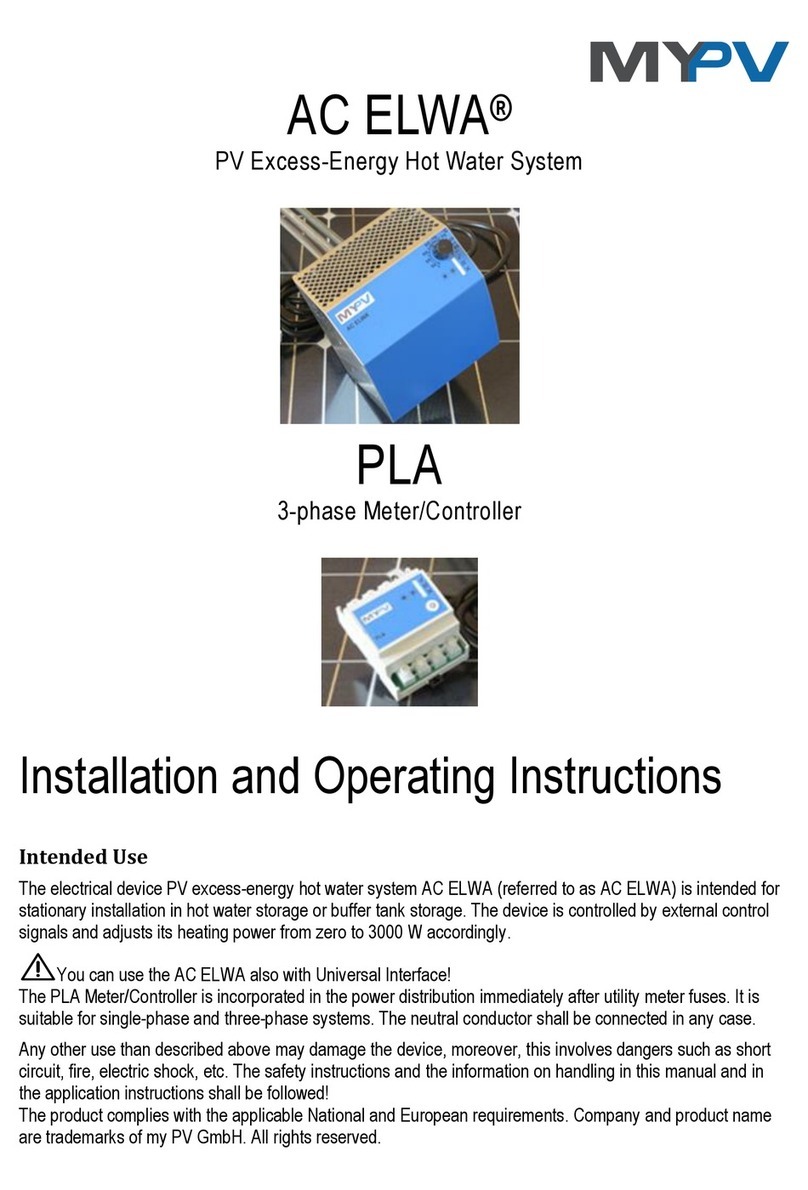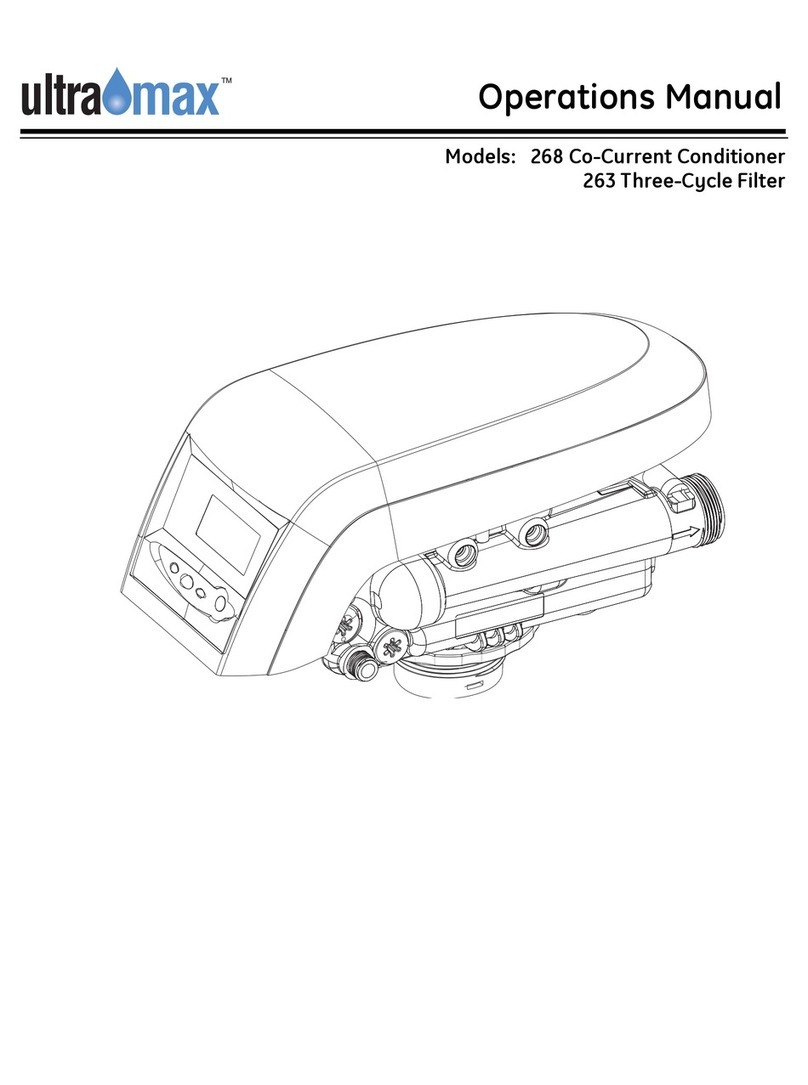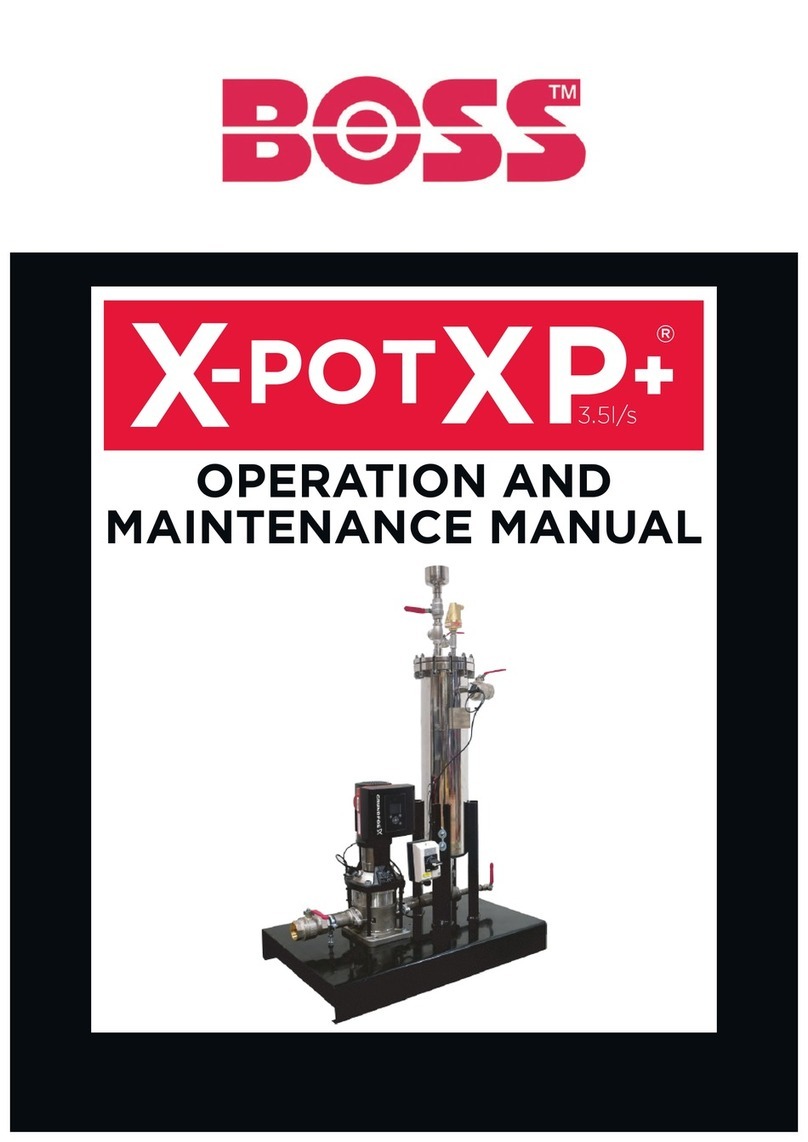MEGAFLO Eco SolaReady User manual

Hot Water Cylinders
MEGAFLO Eco SolaReady Unvented
MEGAFLO Eco SolaReady Product Guide

2
Contents
Product specification
Introduction 4
Component checklist 4
General requirements 4
Outlet/terminal fittings 5
Limitations 5
Water supply 6
Electrical supply 6
The environment 6
Specifications and dimensions 6
Installation Instructions
General installation 8
Installation of solar primary hydraulic station 15
Direct model 17
Indirect model 18
Installation of solar differential
temperature controller 21
Commissioning
Commissioning 22
Commissioning of solar primary system 23
Commissioning of hydraulic station 24
Commissioning of solar differential
temperature controller 25
Commissioning record 35
Maintenance
Servicing and maintenance record sheet 36
Maintenance 37
Fault finding 38
Servicing
Servicing 42
Spares 42
Spares stockists 47
Benchmark checklists 48
Benchmark service record 50
Customer service contacts 52

3
Thank you for purchasing a high quality Megaflo Eco SolaReady Solar Thermal Domestic Hot Water System.
The sun is the ultimate source of most of our renewable energy supplies. Energy from the sun is clean and abundant.
There is a widely held opinion that the UK does not have enough sun to make solar systems worthwhile.
In fact parts of the UK have annual solar radiation levels equal to 60% of those experienced at the equator.
However, this energy is not received uniformly throughout the year. Some 70% of UK annual radiation is received
over the period April to September and 25% is received in the months of June and July.
Solar water heating technology captures energy from the sun and transfers this to a water heater to raise the
water temperature therefore reducing the reliance on fossil fuel energies such as gas, oil and electricity. Up to
60% of a dwelling’s annual hot water requirement can be provided by a solar water heating system. The balance
is provided by traditional means via a second heat exchanger connected to a fossil fuel boiler or electrical heating
by electric boiler or immersion heater.
The Megaflo Eco SolaReady water heating system provides all the principal components required for an efficient
solar water heating system. The sun’s energy is captured by a series of solar collector panels through which a
special heat transfer fluid is pumped. As the fluid passes through the collector panels its temperature is raised.
The heated fluid is circulated through a heat exchanger coil in the base of the Megaflo Eco SolaReady solar
storage cylinder transferring the heat gained to the stored water, gradually raising its temperature. The cooled
fluid then returns to the collector panel to be heated again. Heating by the solar coil is controlled by a solar
differential temperature controller that ensures the system will only operate when there is useful solar heating
gain at the collector panel. As the sun’s energy input to the collector panels is variable supplementary heating by
a conventional boiler or electric immersion heater should be provided.
The Benchmark™ Scheme
Benchmark™ places responsibilities on both manufacturers and installers. The purpose is to ensure that
customers are provided with the correct equipment for their needs, that it is installed, commissioned and serviced
in accordance with the manufacturer’s instructions by competent persons and that it meets the requirements of
the appropriate Building Regulations. The Benchmark™ Checklist can be used to demonstrate compliance with
Building Regulations and should be provided to the customer for future reference. Installers are required to carry
out installation, commissioning and servicing work in accordance with the Benchmark™ Code of Practice which
is available from the Heating and Hotwater Industry Council who manage and promote the Scheme.
Visit www.centralheating.co.uk for more information.
IMPORTANT NOTE TO USER: PLEASE REFER TO THE USER GUIDE SECTION ON PAGE 2 FOR IMPORTANT
INFORMATION WITH RESPECT TO THE BENCHMARK SCHEME

PRODUCT SPECIFICATION
4
Introduction
Congratulations on your purchase of a Megaflo Eco SolaReady unvented water heater. The Megaflo Eco SolaReady is
manufactured in the UK from top quality materials and meets all the latest relevant safety and constructional standards.
The high grade Duplex stainless steel cylinder offers exceptional strength and corrosion resistance which is backed by a
Lifetime guarantee* Its performance and insulation levels exceed the latest requirements of Building Regulation Part L.
The Megaflo Eco SolaReady unvented water heater can be fed directly from the cold water mains supply to the property
without the need for separate feed cisterns or vent pipes. It is supplied complete with all its necessary inlet and safety
controls, electric immersion heater(s) and, for indirect units, a cylinder thermostat, thermal cut-out, 2-port motorised valve
and wiring centre.
Generally its pressure and flowrate performance will far exceed that from a comparable vented system, thermal store,
multipoint instantaneous gas heater, or combination boiler.
Please read and understand this product guide before starting work.
Please leave this product guide with the user following installation.
*See terms and conditions of user guide.
Component Checklist – see figure 1
Before commencing installation check that all the components for your Megaflo Eco SolaReady unit are contained in the
package. The following components are supplied as standard with your Megaflo Eco SolaReady unit:
General Requirements
Important: Please read and understand this product guide before installing the Megaflo Eco SolaReady water heater. Incorrect
installation may invalidate the guarantee. This appliance is not intended for use by persons (including children) with reduced
physical, sensory or mental capabilities, or lack of knowledge and experience, unless they have been given supervision or
instruction concerning the use of the appliance by a person responsible for their safety. The Megaflo Eco SolaReady must
be Installed, Commissioned and Maintained by a competent installer in accordance with Building Regulation G3 (England
and Wales), Technical Standard P3 (Scotland) or Building Regulation P5 (Northern Ireland) and the Water Fitting Regulations
(England and Wales) or Water Byelaws (Scotland). Following Installation and Commissioning, the operation of the heater
should be explained to the user and the user guide left with them for future reference.
Storage
The Megaflo Eco SolaReady is supplied on a pallet with its associated control kits. It should be stored upright in a clean, dy,
frost-free environment prior to installation.
Siting the Megaflo Eco SolaReady (See Figure 1)
The Megaflo Eco SolaReady unit must be vertically floor mounted. It can be placed anywhere convenient provided the
discharge pipe(s) from its safety valves can be correctly installed. Areas that are subject to freezing must be avoided. Ensure
that the floor is of sufficient strength to support the “full” weight of the unit (refer to Tables 2 and 3 on page 7 for unit
weights). Pipe runs should be kept as short as possible for maximum economy. Access to associated controls, immersion
heaters and indirect controls should be possible for servicing and maintenance of the system.
Please do not install valves or pipework (except discharge pipe) within 50mm (2”) of the T&P relief valve to allow your
insulation set to be fitted. The insulation set is important to ensure heat and energy conservation. See page 12 for more
information.
To aid installation, the Megaflo Eco SolaReady is provided with lifting points located in the base moulding and two lifting aids
mounted on the upper rear casing. The weights of the units are noted on the tables on page 7, see tables 2 and 3.
Supplied attached
• Tundish
• Factory fitted Indirect Thermostat and Thermal cut-out
(Indirect units only)
• Factory fitted immersion heater(s) and thermal controls
• Cold Water Inlet Control Kit, comprising of:
• 3 Bar Pressure Reducing Valve (Fig 3) Page 8
• 8 Bar Pressure Relief Valve (Fig 4) Page 9
• Stop cock
• Drain Valve
• Factory fitted Temperature / Pressure Relief Valve (set at
90ºC / 1 Mpa (10bar))
• Thermostatic blending valve
Supplied loose
• T&P Relief Valve Insulation Set
• Wiring Centre (Indirect units only)
• 2-Port Motorised Valve (Indirect units only)
• Solar circuit expansion vessel (including mounting bracket)
• DHW expansion vessel (including mounting bracket)
• Flexible solar expansion vessel connection pipe
Please note: For East / West array installations, the following
kit is required: 95 970 169

PRODUCT SPECIFICATION
5
Outlet / Terminal Fittings (Taps, Etc.)
The Megaflo Eco SolaReady can be used in conjunction with most types of terminal fittings. It is advantageous in many mixer
showers to have balanced hot and cold water supplies, in these instances the balanced cold water supply should be teed off
the supply to the Megaflo Eco SolaReady immediately after the Cold Water Combination Valve (See Figure 5 page 10).
A connection is provided for this purpose, if not used it should be capped off with a suitable stop end fitting. Branches to cold
drinking outlets should be taken before the valve.
Outlets situated higher than the Megaflo Eco SolaReady unit will give outlet pressures lower than that at the heater, a 10m
height difference will result in a 0.1 Mpa (1 bar) pressure reduction at the outlet fitting.
NOTE: Accessories should have a rated operating pressure of at least 0.8 MPa (8 bar).
Limitations
The Megaflo Eco SolaReady unvented water heater should not be used in any of the following instances:
• Solid fuel boilers or any other boiler in which the energy input is not under effective thermostatic control unless additional
and appropriate safety measures are installed.
• Gravity circulation primaries.
• Steam heating plant unless additional and appropriate safety devices are installed.
• Ascending spray type bidets or any other Class 5 back syphonage risk requiring that a Type AA, AB, AD or AG air gap be
employed.
• Water supplies that have either inadequate pressure or where the supply may be intermittent.
• Situations where it is not possible to safely pipe away any discharge from the safety valves.
• Areas where the water consistently contains a high proportion of solids, eg. suspended matter that could block the strainer,
unless adequate filtration can be ensured.
• The installation must be carried out in accordance with the relevant requirements of:
• The appropriate Building Regulations: either The Building Regulations (England), The Building Regulations (Scotland) or
Building Regulations (Northern Ireland).
• The Water Fittings Regulations (England and Wales) or Water Byelaws (Scotland).
BLENDING VALVE
SOLAR EXPANSION VESSEL
DHW EXPANSION VESSEL
TUNDISH
DRAIN COCK
DRAIN COCK
SOLAR PRIMARY RETURN
SOLAR PRIMARY FLOW
SOLAR CONTROLS HOUSING
ELEMENT / CONTROLS
HOUSING
AUXILIARY PRIMARY RETURN
AUXILIARY PRIMARY FLOW
T & P VALVE
SECONDARY RETURN
TAPPING (IF REQ’D)
SOLAR PUMP STATION
SOLAR CONTROL INTERFACE
COLD WATER INLET
DISCHARGE PIPE
3 BAR PRESSURE
REDUCING VALVE
STOP COCK
BALANCED COLD WATER
CONNECTION (IF REQ’D)
8 BAR PRESSURE
RELIEF VALVE
QUICK RELEASE
CONNECTOR VALVE
PUMP STATION
SAFETY GROUP
Figure 1 – Component Checklist

PRODUCT SPECIFICATION
6
Water Supply
Bear in mind that the mains water supply to the property will be supplying both the hot and cold water requirements
simultaneously. It is recommended that the maximum water demand be assessed and the water supply checked to ensure this
demand can be met.
NOTE: A high mains water pressure will not always guarantee high flow rates.
Wherever possible the main supply pipe should be in 22mm. The minimum mains water supply requirements should be
0.15 MPa (1.5 bar) working pressure and 20 litres per minute flowrate.
At these values outlet flowrates may be poor if several outlets are used simultaneously, the higher the available pressure and
flowrate the better the system performance will be.
The Megaflo Eco SolaReady has an operating pressure of 3 bar which is controlled by the 3 Bar Pressure Reducing Valve. The
3 Bar Pressure Reducing Valve can be connected to a maximum mains supply pressure of 1.6 MPa (16 bar). The water supply
must be of wholesome water quality (Fluid Category 1 as defined by the Water Supply Regulations 1999).
The Megaflo Eco SolaReady is only to be used for the storage of wholesome water (max. 250mg/l chloride).
Electrical Supply
WARNING: THIS APPLIANCE MUST BE EARTHED. IT IS SUITABLE FOR A.C. SUPPLY ONLY. ELECTRICAL INSTALLATION MUST BE
CARRIED OUT BY A COMPETENT ELECTRICIAN AND BE IN ACCORDANCE WITH THE LATEST I.E.E. WIRING REGULATIONS.
ENSURE THE ELECTRICAL SUPPLY IS SWITCHED OFF BEFORE MAKING ANY CONNECTIONS TO THE MEGAFLO ECO SOLAREADY.
The Environment
This product is made from many recyclable materials, therefore at the end of its useful life it should be disposed of at a Local
Authority Recycling Centre in order to realise the full environmental benefits. Insulation is by means of an approved HCFC/CFC
free polyurethane foam.
Specifications and Dimensions
Outline Specifications
Maximum mains water supply pressure (to Cold Water Combination Valve) 1.6 MPa (16 bar)
Operating pressure (Pressure reducing valve set pressure – non adjustable) 0.3 MPa (3 bar)
Maximum primary circuit pressure 0.3 MPa (3 bar)
Expansion relief valve set pressure 0.8 MPa (8 bar)
Temperature / Pressure Relief Valve set temp / pressure 90ºC / 1MPa (10 bar)
Immersion heater rating (a.c. supply only) 3kW @ 240V, 2.7kW @ 230V
Outer casing:
White polyester coated corrosion resistant steel.
Water container:
Duplex stainless steel. 100% pressure tested to 1.5 MPa (15 bar).
Thermal insulation:
CFC/HCFC free fire retardant expanded polyurethane foam with zero ozone depletion potential. It has a Global Warming
Potential (GWP) of 3.1. Nominal thickness 60mm.
Pipe connections:
All connections accept 22mm outside diameter pipe – compression nuts and olives supplied. Thread rate is ¾" BSP male
parallel to accept standard ¾" BSP female fittings if required.
Safety features:
Solar primary
Manually resettable thermal cutout on electrical supply to solar differential controller
Direct units
Manually resettable thermal cut-out on each heating element
Factory fitted Temperature / Pressure Relief Valve
Indirect units
Manually resettable thermal cut-out on heating element
Manually resettable thermal cut-out for primary heating. Must be wired in conjunction with 2-port motorised valve supplied
Factory fitted Temperature / Pressure relief valve

PRODUCT SPECIFICATION
7
Figure 2 – Cylinder sizing and specification
Table 4
Nominal capacity
(litres)
Standing heat loss
Per day
(kWh/24h)
Per year
(kWh/year)
250 1.56 569.40
260 1.63 594.95
300 1.84 671.60
Table 1
Size Type Dimensions (mm)
A B C D E F
250 Indirect 1845 1734 1142 1068 - 454
260 Direct 1909 1798 - 1165 916 454
300 Indirect 2160 2048 1438 1255 - 454
Table 3
Size Unit weight (kg) Auxiliary
volume
(litres)
Auxiliary coil specification
Empty Full Surface
(m²)
Heat up
(mins)
Recovery
(mins)
Rating
(kW)
250 56.5 306.5 145 0.73 24.5 20 18.7
300 66.5 366.5 175 0.79 22.5 19 24.5
Table 2
Size Unit weight (kg) Auxiliary
volume
(litres)
Heat up times (mins)
Empty Full Lower
(3kW)
Upper and
lower
(6kW)
Upper
(3kW)
260 47.3 307.3 170 178 89 60
780
770
C
B
A
F
D
DIMENSION
250L SI
260L SD
300L SI
A
1845 1909 2160
B
1734 1798 2048
C
1142
N/A
1438
D
1068
N/A
1255
E
454 454 454
E
780
770
C
B
A
F
D
DIMENSION
250L SI
260L SD
300L SI
A
1845 1909 2160
B
1734 1798 2048
C
1142
N/A
1438
D
1068
N/A
1255
E
454 454 454
E
Notes:
Heat up and recovery times are based on heating the
cylinder from 15ºC to 60ºC.
Primary heating times are based on a primary flow
temperature of 80ºC at a flowrate of 15 l/min.
Table:
Figures measured in accordance with KIWA Test Criteria for
compliance with UK Building and Water Regulations

INSTALLATION
8
General Installation
Pipe Fittings
All pipe connections to the Megaflo Eco SolaReady are made via 22mm compression fittings directly to the unit (nuts and
olives supplied).
Cold Water Supply
A 22mm cold water supply is recommended, however, if a 15mm (½") supply exists which provides sufficient flow (see
Section 1 Page 6 “Water Supply”) this may be used. More flow noise may be experienced from small bore pipes due to the
increased water velocity through them.
The Cold Water Inlet Control kit supplied fitted to the Megaflo Eco SolaReady incorporates a full flow isolating valve which
will enable the Megaflo Eco SolaReady to be isolated from the mains supply for maintenance or servicing. To close the valve
the blue handle should be turned so that it lies at 90º to the direction of flow. To open, turn the handle so that it lies parallel
to the direction of flow.
3 Bar Pressure Reducing Valve – supplied fitted (see figure 3)
The 3 Bar pressure Reducing Valve is installed as a complete one-piece unit and incorporates the stopcock. The valve
incorporates a factory set, non-adjustable Pressure Reducer / Strainer and a single Check Valve. However, the 3 Bar Pressure
Reducing Valve can be connected anywhere on the cold water mains supply prior to the Megaflo Eco SolaReady unit. There
is no requirement to site it close to the unit, it can be located at a point where the mains supply enters the premises if this is
more convenient but you must install a non-return valve just after the reducing valve for ease of maintenance.
If a balanced pressure cold water supply is required to a thermostatic shower mixer valve this may be teed off the supply to
the Megaflo Eco SolaReady immediately after the 3 Bar Pressure Reducing Valve (See Figure 5, page 10).
A connection is provided for this purpose (see fig 1 page 5). If this is not required the connection pipe must be capped off
with a suitable stop end fitting.
Direct
Supplier’s name or trade mark Megaflo Eco SolaReady
Supplier’s model identifier 260D
Storage volume V in litres 260.0
Mixed water at 40 °C V40 in litres 271.0
The declared load profile XL
The water heating energy efficiency class of the model C
The water heating energy efficiency in % 38.3
The annual electricity consumption in kWh 4377
Daily fuel consumption Q fuel in kWh 20.190
The thermostat temperature settings of the water heater, as placed on
the market by the supplier
60°C
Specific precautions that shall be taken when the water heater is
assembled, installed or maintained and disposed of at end of life See page 4 to 42
Indirect
Model(s) 250Si 300Si
Energy efficiency class C C
Storage volume V in litres 250.0 300.0
Standing loss in W 80.0 88.0
Table: Technical parameters in accordance with European Commission regulations 814/2013 and 812/2013

INSTALLATION
9
8 Bar Pressure Relief (Expansion) Valve – supplied fitted (see figure 4)
This is installed between the 3 bar Pressure Reducing Valve and the Megaflo Eco SolaReady cylinder. Branches to drinking
water outlets should be taken before the Pressure Relief Valve to avoid the possibility of warm expanded water being drawn
from the tap.
The Pressure Relief (Expansion) Valve is supplied pre-plumbed to the inlet connection of the Megaflo Eco SolaReady unit.
No other valve should be fitted between the Pressure Relief (Expansion) Valve and the cylinder inlet.
Outlet to Megaflo
eco Solar
Mains in
22mm compression connection
Take note of flow
direction
Pressure reducing valve
cartridge (3 Bar)
22mm compression connection
Outlet to Megaflo
eco Solar
From cold water
Combination Valve
Take note of flow
direction
Pressure Relief Valve
discharge connection
Pressure Relief Valve
“TEE” ( incorporates
Check Valve )
Figure 3 – 3 Bar Pressure Reducing Valve
Figure 4 – 8 Bar Pressure Relief Valve

INSTALLATION
10
Tundish
Megaflo Eco
SolaReady
Balanced cold water
draw-o
Blending valve
Factory tted
8 Bar Pressure Relief
Valve (combined
Expansion Relief
Valve/Check Valve
– factory tted)
3 Bar Pressure Reducing
Valve incorporating
Pressure Reducing Valve,
Strainer,and Check Valve.
(factory tted)
MCWS to Kitchen
(unbalanced cold
mains supply)
Incoming Cold
Water Main
KEY
MCWS = Mains cold water supply
HWS = Hot water service
SC = Stop Cock / Isolating Valve
DOC = Drain O Cock
Discharge pipe to atmosphere
(see page 14 “Discharge Pipework”)
Isolating/Regulating
Valves, as required
Temperature/Pressure
Relief Valve
HWS supply
Balanced HWS and
MCWS to bathrooms,
showers, cloakrooms,
etc
DOC DOC
DOC
DOC
SC
SC
Expansion Vessel
Figure 5 – Cold and hot water supply circuits
Figure 6 – Solar and CH primary circuits
Megaflo Eco
SolaReady
Flow meter
Air separator
Isolating /
check valves
Solar circulating
pump
Solar expansion valve
Flexible connector Primary
pump
CH circuit
Motorised valve
(supplied)
Boiler / auxiliary
heat source
Solar expansion
vessel
Solar discharge
collection vessel
Dashed line
denotes Solar
Hydraulic Station
(supplied tted)
Solar collector(s)
S4
M
M
Optional
East / West
Array kit

INSTALLATION
11
Drain Tap
A drain tap is supplied fitted in the cold water supply to the Megaflo Eco SolaReady unit between the 8 Bar Pressure Relief
Valve and the heater at the lowest point of the cold water supply pipe. It is recommended that the outlet point of the drain
pipe work be at least 1 metre below the level of the heater (this can be achieved by attaching a hose pipe to the drain tap
outlet spigot). Ensure any drain-off points are positioned well away from any electrical components.
Outlet Pipework
Ideally the pipework from the Megaflo Eco SolaReady to the outlet fittings should be in 22mm pipe with short runs of 15mm
pipe to showers and basin taps. Small bore pipe can also be used to suit some taps, but runs should be of minimum length.
Pipe sizes may vary due to system design.
Thermostatic blending valve
The hot outlet pipework is connected to the "blended water" port of the thermostatic blending valve which is factory fitted.
The valve is preset to a temperature of 55ºC, but can be set to a maximum of 65ºC ±2ºC.
NOTE: Storage temperature must be set at >55ºC for the blended temperature to be achieved.
DHW expansion vessel
The Expansion Vessel accommodates expansion that results from heating the water inside the unit. The unit is pre-charged at
0.35 MPa (3.5 bar). The Expansion Vessel must be connected between the 8 Bar Pressure Relief Valve and the Megaflo Eco
SolaReady cylinder (See Figure 5). An Expansion Vessel mounting bracket is supplied for this purpose.
NOTE: DO NOT USE THE POTABLE WATER EXPANSION VESSEL SUPPLIED WITH THE MEGAFLO ECO SOLAREADY FOR ANY
OTHER PURPOSE. IT MUST NOT BE USED IN PLACE OF THE SOLAR PRIMARY SYSTEM EXPANSION VESSEL.
Secondary Circulation
If a secondary circulation system is required it is recommended that it be connected to the Megaflo Eco SolaReady as shown
in Figure 7. To achieve this the 1/2” BSP Sensor Pocket must be removed. The secondary return pipe should be in 15mm pipe
and incorporate a check valve to prevent backflow. A suitable WRAS approved bronze circulation pump will be required.
On large systems, due to the increase in system water content, it may be necessary to fit additional expansion volume to the
system by fitting an additional expansion vessel to the secondary circuit. This should be done if the capacity of the secondary
circuit exceeds 10 litres. To conserve energy it is recommended any secondary circulation pump is timed to operate only during
periods of water draw-off demands.
Pipe capacities (copper)
15mm o/d = 0.13 litres per metre run (10 litres = 77m)
22mm o/d = 0.38 litres per metre run (10 litres = 26m)
28mm o/d = 0.55 litres per metre run (10 litres = 18m)
NOTE: Secondary circulation is NOT recommended for direct electric units connected to an off-peak electrical supply.
Megaflo Eco
SolaReady
Blending valve
Factory fitted
MCWS to Kitchen
(unbalanced cold
mains supply)
Incoming Cold
Water Main
Temperature/Pressure
Secondary return
Isolating valves
Check valve
Relief Valve
HWS supply
DOC
DOC
SC
SC
WRAS approved
bronze secondary
circulation pump
Figure 7 – Secondary Circulation Connection

INSTALLATION
12
T&P Relief Valve Insulation
A set of insulating components is supplied with the Megaflo Eco SolaReady water heater and should be installed to gain
maximum heat and energy saving benefits. See Figure 8 (below), for installation instructions.
Warnings
Under no circumstances should the factory fitted Temperature /Pressure Relief Valve be removed other than by authorised
Heatrae Sadia personnel. To do so will invalidate any guarantee or claim.
The Cold Water Inlet Control kit must be fitted to the mains water supply to the Megaflo Eco SolaReady unit.
No control or safety valves should be tampered with.
Water may drip from the discharge pipe of the pressure relief device (Expansion Valve) and this pipe must be left open to
atmosphere. The discharge pipe should not be blocked or used for any other purpose.
The discharge connections from the Pressure Relief (Expansion) Valve and the Temperature & Pressure Relief Valve must not
be used for any other purposes.
Electrical connections and components should not be placed where they could be splashed in the event of a malfunction,
i.e. away from any discharge pipe, the tundish and various valve and pipe connections.
IMPORTANT INFORMATION:
HOW TO INSULATE YOUR T&P RELIEF VALVE
TO SAVE HEAT AND ENERGY A SET OF INSULATING PARTS FOR
THE T&P RELIEF VALVE HAVE BEEN SUPPLIED WITH THIS WATER
HEATER. INSTALL THE HEATER FIRST THEN FIT THE INSULATING
PARTS BY FOLLOWING THE DIAGRAMS BELOW.
A
B
C
D
T&P RELIEF
VALVE
DISCHARGE
PIPEWORK
TUNDISH
LEFT HAND
INSULATING PIECE
PLASTIC COVER DISCHARGE PIPE
RIGHT HAND
INSULATING PIECE
CLIP INTO
PLACE !
Figure 8 – Installation of T&P insulation set

INSTALLATION
13
Discharge Pipework
It is a requirement of Building Regulations that any discharge from an unvented system is conveyed to where it is visible,
but will not cause danger to persons in or about the building. The tundish and discharge pipes should be fitted in accordance
with the requirements and guidance notes of Building Regulations. Building Regulation G3 Requirements and Guidance are
reproduced in the following sections.
For discharge pipe arrangements not covered by G3 Guidance advice should be sought from your local Building Control
Officer. Any discharge pipe connected to the pressure relief devices (Expansion Valve and Temperature / Pressure Relief Valve)
must be installed in a continuously downward direction and in a frost free environment.
The water may drip from the discharge pipe of the pressure relief device and that this pipe must be left open to the
atmosphere. The pressure relief device is to be operated regularly to remove lime deposits and to verify that it is not blocked.
G3 Requirement
“...there shall be precautions...to ensure that the hot water discharged from safety devices is safely conveyed to where it is
visible but will not cause danger to persons in or about the building”.
Notes:
1) Discharge pipe-work D2 can now be a plastic pipe but only pipes that have been tested to a minimum 110°C must be used.
2) Discharge pipe D2 can now be plumbed into the soil stack but only soil stacks that can handle temperatures of 99°C or
greater for prolonged periods should be used.
Worked example of discharge pipe sizing
This example is for a G½ temperature relief valve with a discharge pipe (D2) having 4 No. elbows and length of 7m from the
tundish to the point of discharge.
From Table 5:
Maximum resistance allowed for a straight length of 22mm copper discharge pipe (D2) from a G½ temperature relief valve is
9m.
Subtract the resistance for 4 No. 22mm elbows at 0.8m each = 3.2m
Therefore the permitted length equates to: 5.8m
5.8m is less than the actual length of 7m therefore calculate the next largest size.
Maximum resistance allowed for a straight length of 28mm pipe (D2) from a G½ temperature relief valve equates to 18m.
Subtract the resistance of 4 No. 28mm elbows at 1m each = 4m
Therefore the maximum permitted length equates to: 14m
As the actual length is 7m, a 28mm (D2) copper pipe will be satisfactory.
Table 5
Valve
outlet
size
Minimum
size of
discharge
pipe D1
Minimum size of
discharge pipe
D2 from tundish
Maximum resistance
allowed, expressed
as a length of straight
pipe (i.e. no elbows
or bends)
Resistance
created
by each
elbow
G ½ 15mm 22mm
28mm
35mm
Up to 9m
Up to 18m
Up to 27m
0.8m
1.0m
1.4m
G ¾ 22mm 28mm
35mm
42mm
Up to 9m
Up to 18m
Up to 27m
1.0m
1.4m
1.7m
G 1 28mm 35mm
42mm
54mm
Up to 9m
Up to 18m
Up to 27m
1.4m
1.7m
2.3m
Safety device
(e.g. Temperature relief valve)
600mm
max.
Metal discharge pipe (D1) from
Temperature relief valve to tundish
300mm
min.
Discharge pipe (D2) from tundish with
continuous fall. See Building Regulation G3
section 3.56, Table 4 and worked example.
Trapped gully
Discharge below
xed grating
(Building Regulation
G3 section 3.61 gives
alternative points
of discharge
Figure 9

INSTALLATION
14
The following extract is taken from the latest G3 Regulations
Discharge pipes from safety devices
Discharge pipe D1
3.50 Safety devices such as temperature relief valves or combined temperature and pressure and pressure relief valves (see paragraphs 3.13 or 3.18) should
discharge either directly or by way of a manifold via a short length of metal pipe (D1) to a tundish.
3.51 The diameter of discharge pipe (D1) should be not less than the nominal outlet size of the temperature relief valve.
3.52 Where a manifold is used it should be sized to accept and discharge the total discharge form the discharge pipes connected to it.
3.53 Where valves other than the temperature and pressure relief valve from a single unvented hot water system discharge by way of the same manifold that is
used by the safety devices, the manifold should be factory fitted as part of the hot water storage system unit or package.
Tundish
3.54 The tundish should be vertical, located in the same space as the unvented hot water storage system and be fitted as close as possible to, and lower than,
the valve, with no more than 600mm of pipe between the valve outlet and the tundish (see Diagram 1).
Note: To comply with the Water Supply (Water Fittings) Regulations, the tundish should incorporate a suitable air gap.
3.55 Any discharge should be visible at the tundish. In addition, where discharges from safety devices may not be apparent, e.g. in dwellings occupied by
people with impaired vision or mobility, consideration should be given to the installation of a suitable safety device to warn when discharge takes place,
e.g. electronically operated.
Discharge pipe D2
3.56 The discharge pipe (D2) from the tundish should:
(a) have a vertical section of pipe at least 300mm long below the tundish before any elbows or bends in the pipework (see Diagram 1); and
(b) be installed with a continuous fall thereafter of at least 1 in 200.
3.57 The discharge pipe (D2) should be made of:
(a) metal; or
(b) other material that has been demonstrated to be capable of safely withstanding temperatures of the water discharged and is clearly and
permanently marked to identify the product and performance standard (e.g. as specified in the relevant part of BS 7291).
3.58 The discharge pipe (D2) should be at least one pipe size larger than the nominal outlet size of the safety device unless its total equivalent hydraulic
resistance exceeds that of a straight pipe 9m long, i.e. for discharge pipes between 9m and 18m the equivalent resistance length should be at least two
sizes larger than the nominal outlet size of the safety device; between 18 and 27m at least 3 sizes larger, and so on; bends must be taken into account in
calculating the flow resistance. See Diagram 1, Table 1 and the worked example.
Note: An alternative approach for sizing discharge pipes would be to follow Annex D, section D.2 of BS 6700:2006 Specification for design, installation, testing
and maintenance of services supplying water for domestic use within buildings and their curtilages.
3.59 Where a single common discharge pipe serves more than one system, it should be at least one pipe size larger than the largest individual discharge pipe
(D2) to be connected.
3.60 The discharge pipe should not be connected to a soil discharge stack unless it can be demonstrated that that the soil discharge stack is capable of safely
withstanding temperatures of the water discharged, in which case, it should:
(a) contain a mechanical seal, not incorporating a water trap, which allows water into the branch pipe without allowing foul air from the drain to be
ventilated through the tundish;
(b) be a separate branch pipe with no sanitary appliances connected to it;
(c) if plastic pipes are used as branch pipes carrying discharge from a safety device they should be either polybutalene (PB) to Class S of BS 7291-
2:2006 or cross linked polyethylene (PE-X) to Class S of BS 7291-3:2006; and
(d) be continuously marked with a warning that no sanitary appliances should be connected to the pipe.
Note:
1. Plastic pipes should be joined and assembled with fittings appropriate to the circumstances in which they are used as set out in BS EN ISO 1043-1.
2. Where pipes cannot be connected to the stack it may be possible to route a dedicated pipe alongside or in close proximity to the discharge stack.
Termination of discharge pipe
3.61 The discharge pipe (D2) from the tundish should terminate in a safe place where there is no risk to persons in the vicinity of the discharge.
3.62 Examples of acceptable discharge arrangements are:
b) to a trapped gully with the end of the pipe below a fixed grating and above the water seal;
(c) downward discharges at low level; i.e. up to 100mm above external surfaces such as car parks, hard standings, grassed areas etc. are acceptable
providing that a wire cage or similar guard is positioned to prevent contact, whilst maintaining visibility; and
(d) discharges at high level: e.g. into a metal hopper and metal downpipe with the end of the discharge pipe clearly visible or onto a roof capable of
withstanding high temperature discharges of water and 3m from any plastic guttering system that would collect such discharges.
3.63 The discharge would consist of high temperature water and steam. Asphalt, roofing felt and non-metallic rainwater goods may be damaged by such
discharges.

INSTALLATION
15
Installation of solar primary hydraulic station
The solar primary hydraulic station and differential
temperature controller are supplied pre-fitted to the Megaflo
Eco SolaReady unit. The solar pump and various thermal
sensors are pre-wired to the controller, but will require
correct installation in the solar primary circuit.
Identification of components
The main components of the hydraulic station are:
– Two isolating valves (Fig. 10, Item 1 & 2) with integral
thermometers which display the solar primary flow and
return temperatures.
– A safety group (Fig. 10, Item 3), which protects the solar
primary circuit. The pressure relief valve and pressure
gauge are integrated in the safety group.
– A non-return valve in both feed and return prevents the
possibility of gravity circulation in the solar primary circuit.
– A solar circulation pump (Fig. 10, Item 4).
– A flow meter with fill & drain valve and shut-off valve
(Fig. 10, Item 5).
– An air separator.
The heat transfer fluid is circulated by the solar circulation pump integrated in the hydraulic pump station (Fig. 10).
The hydraulic station has a solar differential temperature controller (Fig. 10, Item 6) integrated into the front insulation
moulding. This is pre-wired to the solar pump and thermal controls.
Pipework installation – general (see Fig 6)
In Solar Heating Systems, the collectors, the hydraulic station and solar cylinder must be connected with brazed or silver
soldered copper pipes, compression fittings or the multifit accessory flexible steel tube and insulation. (See brochure for
details) N.B. Plastic pipes MUST NOT be used for the solar primary pipework.
Connections supplied are suitable for pipe diameters of 22mm. However for short pipe runs (up to 10m flow and return) the
use of 15mm diameter pipe is acceptable.
All connections and joints must be resistant to temperatures of up to 150°C and resistant to glycol.
If any pipe sealants are used these should be resistant to glycol and be able to withstand temperatures of up to 150°C.
The solar collectors (panels or evacuated tubes) must be installed according to the instructions supplied with those selected.
We can only guarantee the system performance if installed in conjunction with Megaflo supplied collectors.
The difference in height between the highest point in the pipework (collector) and the level of the hydraulic pump station
determines the static head for the system. The static head is 0.1 bar times this height in metres. This static head is used when
setting the solar primary expansion vessel precharge pressure and the system pressure.
If the static head is greater than 1.5 bar (15m) then a larger expansion vessel may be required for larger collector arrays.
If the pipe runs between the solar collector and pump station are short (<6m) then a protection vessel (Accessory No.
5131963) should be installed between the pump station and expansion vessel.
Earthing pipework – all solar primary pipework between the solar collectors, hydraulic station and solar cylinder should be
earth bonded in accordance with current IEE wiring regulations.;
Venting the pipework – the hydraulic station includes an air collector/separator and bleed point so an automatic air vent is not
necessary. Any section of solar pipework that falls and rises again should be fitted with an additional air vent valve to relieve
any trapped air which may cause air locking in the system. The automatic air vent and isolating valve used must be compatible
with solar primary systems, i.e. be resistant to glycol and temperatures up to 180ºC.
Insulating the pipework – external pipework should be insulated with high temperature resistant materials and be protected
against UV degradation. The insulation must be peck-proof and rodent-proof. Internal pipework, especially through unheated
spaces such as a loft space, should also be insulated with high temperature resistant materials. Mark the outside of any
insulation to identify the flow and return pipes. The collectors are supplied with 2x2m pre insulated flexible stainless steel
tubes. Additional lengths (30m) of stainless steel flexible tubes and high temperature insulation can be supplied.
12 © Baxi Heating UK 2012
7.0 Installation of hydraulic station
7.2 Identification of components
1.The main components of the hydraulic station are:
– Two isolating valves (Fig. 10, Item 1 & 2) with integral
thermometers which display the solar primary flow
and return temperatures.
– A safety group (Fig. 10, Item 3, supplied unconnected),
which protects the solar primary circuit.The pressure
relief valve and pressure gauge are integrated in the
safety group.
– A non-return valve in both feed and return prevents
the possibility of gravity circulation in the solar
primary circuit.
– A solar circulation pump (Fig. 10, Item 4).
– A flow meter with fill & drain valve and shut-off valve
(Fig. 10, Item 5).
– An air separator.
2.The heat transfer fluid is circulated by the solar circulation
pump integrated in the hydraulic pump station (Fig. 10).
3.The hydraulic station has a solar differential temperature
controller (Fig. 10 Item 6) integrated into the front
insulation moulding.This is pre-wired to the solar pump.
Fig. 10
21 3
4
5
6
Figure 10

INSTALLATION
16
Connecting the solar expansion vessel
Mount the solar expansion vessel (Fig 11 Item 5) adjacent to the hydraulic station so that the vessel can be connected to the
vessel connection of the safety group (Fig 11 Item 3) using the flexible pipe (Fig 11 Item 6) supplied. (Note: Solar expansion
vessel, mounting bracket, self sealing connection and flexible pipe are supplied in the Ancillary Components kit).
The vessel must be mounted as shown (connection to top) and securely supported using the bracket supplied. The self sealing
vessel connection should be screwed onto the vessel connection before connecting the flexible pipe (Fig. 16 Item 5).
DO NOT replace the solar expansion vessel with either a potable water expansion vessel or boiler sealed system vessel.
The charge pressure of the solar expansion vessel must be adjusted (when the fluid circuit is empty or de-pressurised) to a
pressure equal to the static head + 0.4 bar, or a minimum of 1.2 bar. (NOTE: the static head is the height difference between
the highest point in the pipework (collector) and the hydraulic station in metres x 0.1 bar. The charge pressure should not
normally exceed 1.9 bar – see also Commissioning of the hydraulic station (page 24).
Connecting pipework
Connect the flow and return pipes from the solar collector panels / tubes to the pump station via compression fittings (Fig 17).
Fittings are for 22mm o/dia pipe. Support the hydraulic assembly when tightening connections.
16 © Baxi Heating UK 2012
7.0 Installation of hydraulic station
7.7 Installing the safety group
1. Connect the safety group (Fig 15 Item 1) to the connection
on the hydraulic station return isolating valve assembly (Fig 15
Item 3). Ensure that the pre-fitted gasket is securely in place on
the safety group prior to connection.
7.8 Connecting the solar expansion vessel
1. Mount the solar expansion vessel (Fig 16 Item 1) adjacent to
the hydraulic station (Fig 16 Item 2) so that the vessel can be
connected to the vessel connection of the safety group (Fig 16
Item 3) using the flexible pipe (Fig 16 Item 4) supplied. (Note:
Solar expansion vessel, mounting bracket, self sealing connection
and flexible pipe are supplied in the Ancillary Components kit).
2.The vessel must be mounted as shown (connection to top)
and securely supported using the wall bracket supplied. The self
sealing vessel connection should be screwed onto the vessel
connection before connecting the flexible pipe (Fig. 16 Item 5).
3. DO NOT replace the solar expansion vessel with either a
potable water expansion vessel or boiler sealed system vessel.
4.The charge pressure of the solar expansion vessel must be
adjusted (when the fluid circuit is empty or de-pressurised) to a
pressure equal to the static head + 0.4 bar, or a minimum of 1.2
bar. (NOTE: the static head is the height difference between the
highest point in the pipework (collector) and the hydraulic
station in metres x 0.1 bar.The charge pressure should not
normally exceed 1.9 bar - see also Section 7.4.
7.9 Connecting pipework
1. Connect the flow and return pipes to the pump station via
compression fittings (Fig 17 Item 1). Fittings are for 22mm o/dia
pipe. Support the hydraulic assembly when tightening
connections.
2. Installing a drain valve
It is recommended to install a device for draining the solar
heating system (tee piece with drain valve, Fig. 18) into the flow
and return at the lowest point in the solar heating system.The
drain and its rubber seal must be suitable for solar applications.
3. Connecting the solar cylinder
For detailed installation instructions refer to the
installation instructions supplied with the solar cylinder.
1
2
3
4
5
1
2
3
3
2
5
6
4
1
Flow
from
panel
Return
to
panel
Flow
to
cylinder
Return
from
cylinder
To a suitable container
(e.g. Solar fluid discharge vessel
Accessory No. 720294601)
Flow to cylinder
Return from cylinder
Return to hydraulic station
Fig. 15
Fig. 17
Fig. 18
Fig. 16
Figure 11

INSTALLATION
17
Direct Model
Immersion Heater(s)
The Megaflo Eco SolaReady Direct is supplied with two factory fitted immersion heaters, each rated 3kW at 240V. See fig 2
page 7 for positions.
Wiring (See Figure 16)
All electrical wiring should be carried out by a competent electrician and be in accordance with the latest I.E.E. Wiring
Regulations. Each circuit must be protected by a suitable fuse and double pole isolating switch with a contact separation of at
least 3mm in both poles. The immersion heater(s) should be wired in accordance with Figure 14 below. The immersion heaters
MUST be earthed. The supply cable should be a minimum of 1.5mm² 3 core HOFR sheathed.
DO NOT OPERATE THE IMMERSION HEATER(S) UNTIL THE MEGAFLO ECO SOLAREADY HAS BEEN FILLED WITH WATER.
Access to Control Unit:
DISCONNECT FROM MAINS SUPPLY BEFORE REMOVING ANY COVERS.
Removing the Control Cover:
Unscrew the large screw using a flat ended screw driver. Lift from bottom of cover at point indicated until cover comes away freely
(see Fig 12).
Operation
See Figure 13 for details on how to adjust the temperature setting of the heater. The thermostat incorporates a thermal cut-out
that will switch off the immersion heater in the event of a thermostat failure. The thermal cut-out reset button position is
indicated on Figure 13. DO NOT BYPASS THE THERMAL CUT-OUT IN ANY CIRCUMSTANCES.
The lower immersion heater can be operated via the solar differential controller (refer to fig. 16, "Block wiring diagram C")
for wiring details. See the Commissioning Section for setup details.
Note: The solar differential controller is rated at 3 amp and cannot directly switch the immersion heater. This must be done via
the Auxiliary Immersion Relay provided. The upper immersion is for boost purposes
only and should be manually switched via a separate 13 amp circuit.
Replacing the Control Cover:
Tilt and align the top 2 lugs in the holes indicated. Firmly press the cover until it
“snaps” back in place. Tighten the large screw ( DO NOT OVER TIGHTEN ).
Safety
DO NOT BYPASS THE THERMAL CUT-OUT(S) IN ANY CIRCUMSTANCES
DISCONNECT FROM THE MAINS SUPPLY BEFORE REMOVING ANY COVERS
NEVER ATTEMPT TO REPLACE AN IMMERSION HEATER OTHER THAN WITH THE
RECOMMENDED HEATRAE SADIA MEGAFLO ECO SOLAR SPARE PART
THERMAL CUT-OUT RESET BUTTON
SPINDLE POSITIONS
= MINIMUM TEMP
= MAXIMUM TEMP
= APPROX 60 °C
ROTATE SPINDLE CLOCKWISE
FOR TEMPERATURE INCREASE
AND COUNTER CLOCKWISE
FOR TEMPERATURE DECREASE
TEMPERATURE ADJUSTING
SPINDLE
LIFT OFF
REPLACE
LIFT FROM
THIS POINT
LUGS
NL
Direct Wiring Layout
1.5mm2 3 Core
HOFR sheathed
cable
Figure 12
Figure 14
Figure 13

INSTALLATION
18
Indirect Model
Boiler Selection
The Megaflo Eco SolaReady Indirect models are supplied with an auxiliary heating coil and are suitable for use with most gas
or oil fired boilers compatible with unvented systems i.e. fitted with a temperature control thermostat and thermal cut-out. If
in doubt consult the boiler manufacturer. Solid fuel boilers or any other boiler in which the energy input is not under effective
thermostatic control, unless additional and appropriate safety measures are installed, SHOULD NOT be used. The boiler used
can either be a sealed system or open vented type, maximum primary circuit pressure 0.3Mpa (3 bar). The primary flow
from the boiler MUST be pumped. Gravity circulation will not work due to the special design of the primary heat exchanger.
It is recommended that an air bleed point or automatic air vent is incorporated in the primary return pipework close to the
Megaflo Eco SolaReady unit. The boiler flow temperature should usually be set to 82ºC (maximum flow temperature to
primary heat exchanger 89ºC). The boiler cannot be vented through the Megaflo eco Solar unit.
Indirect Thermal Cut-Out And 2-Port Motorised Valve
To comply with Building Regulations, and to prevent the Megaflo Eco SolaReady from overheating the 2-port motorised valve
supplied MUST be fitted to the primary flow to the indirect coil (see Figure 6).
Wiring
All electrical wiring should be carried out by a competent electrician and be in accordance with the latest I.E.E. Wiring
Regulations.
The Megaflo Eco SolaReady Indirect combined thermostat and thermal cut-out are factory pre-wired. The 2-port motorised
valve supplied MUST be wired in series with the Indirect controls such that the power supply to the valve is interrupted should
either the Thermostat or Thermal cut-out operate. Figure 16, diagrams A, B, D and E detail the wiring required between these
controls and the motorised valve. Wiring to external controls is made via the terminal block fitted. The cable should be routed
through the aperture in the terminal cover and secured using the cable grip provided. The Indirect Thermal cut-out MUST NOT
be bypassed.
Heating System Controls
The controls provided with the Megaflo Eco SolaReady will
ensure the safe operation of the Megaflo Eco SolaReady
within a central heating system. Other controls will be
necessary to control the space heating requirements and
times that the system is required to function. Depending on
the boiler selected, heating circuit design and controls used it
may be beneficial to incorporate a system bypass in the
heating system pipework.
The Megaflo Eco SolaReady is compatible with most heating
controls, examples of electrical circuits are given in the block
wiring schemes. However, other systems may be suitable,
refer to the controls manufacturers’ instructions, supplied
with the controls selected, for alternative system wiring
schemes.
The auxiliary indirect heating source can be controlled via the
Solar Differential Controller – refer to block wiring schemes
B and E and Commissioning Section for setup details.
NOTE: The auxiliary backup immersion heater must have a
separate 13 amp fused supply and cannot be operated via the
Solar Differential Controller on indirect models.
Immersion Heater(s)
The Megaflo Eco SolaReady indirect units (Indirect models) are supplied with an immersion heater which can be used as an
alternative heat source should the boiler supply need to be isolated from the Megaflo Eco SolaReady unit. The immersion
heater is located within the upper controls housing. Refer to page 17 “Wiring and Operation” for details of wiring and
operation of the immersion heater.
LN
1 2 3
Control Housing Details
Element Connections
1.5mm² 3 Core
HOFR sheathed
cable
Indirect control
wiring
Figure 15 – Control housing details

INSTALLATION
19
Diagram A
In conjunction with auxiliary heating boiler – no reheat control by solar differential controller.
3A fused supply Boiler terminal strip Programmer
N L L PL N SL L N DHW CH ON
N 1 2 4 N 5 3 N 7 6
Terminal box (supplied)
N 1 2 3 4 5 6 7 8 9 10 11 12 13 14 15 16
Link
Link
Link
Link
8 9 N 10 1 5
1 2 3 GY BL BR GR OR
Cylinder auxiliary controls DHW 2 port valve
N 6 11 N 12 2 5 4 N
N 1 2 GY BL BR GR OR L N
Room stat CH 2 port valve CH pump
Solar o/temp
cutout
Solar pump
2 N 11 12 See fig 17 A1 N
PE L N A1 N A2 N T1 T2 T4 T7 11 12 E
Solar differential controller Solar pump
Solar
controller
1 L
NOTE: For boilers with pump over-run,
CH pump live supply should be connected
to terminal 5 in the terminal box.
1 2
Solar o/temp cutout
Diagram B
In conjunction with auxiliary heating boiler – reheat control via solar controller.
3A fused supply Boiler terminal strip Programmable room stat
N L L PL N SL L N 1 2
N 1 2 4 N 5 3 N 3 6
Terminal box (supplied)
N 1 2 3 4 5 6 7 8 9 10 11 12 13 14 15 16
Link
7 8 N 8 3 5
1 2 3 GY BL BR GR OR
Cylinder auxiliary controls DHW 2 port valve
N 6 2 5 4 N
GY BL BR GR OR L N
CH 2 port valve CH pump
Solar o/temp
cutout
Solar pump
2 N 11 12 7 N See fig 17 A1 N
PE L N A1 N A2 N A3 N T1 T2 T4 T5 T7 11 12
Solar differential controller Solar pump
Solar
controller
1 L
1 2
Solar o/temp cutout
Diagram C
Auxiliary heating by immersion heater – reheat control via solar controller.
Immersion heater
3A fused supply 13A fused supply
N L N L
N 1 N 8
N 1 2 3 4 5 6 7 8 9 10 11 12 13 14 15 16
Solar o/temp
cutout
Solar pump Relay
2 N 11 12 1 5 See fig 17 A1 N
PE L N A1 N A2 N A3 N T1 T2 T4 T5 T7 11 12
Solar differential controller Solar pump
Solar
controller
Solar controller NOTE: The above
wiring is for the lower
immersion heater
only. Switching of the
upper immersion heater
is not possible using the
solar differential controller.
1 L A3 N 8 9 9 N
1 2 1 5 COM NO L N
Solar o/temp cutout Auxiliary immersion heater Immersion heater
Key
L Live
N Neutral
GY Green & yellow
BL Blue
BR Brown
GR Grey
OR Orange
WH White
PL Pump live
SL Switched live
PE / E / Protective earth
Figure 16 – Wiring diagrams

INSTALLATION
20
Diagram D
In conjunction with auxiliary heating boiler with a 3 port mid position valve system
– no reheat control via solar controller.
3A fused supply Boiler terminal strip Programmer
N L L PL N SL L N DHW ON DHW OFF CH ON
N 1 2 4 N 5 3 N 9 10 7
Terminal box (supplied)
N 1 2 3 4 5 6 7 8 9 10 11 12 13 14 15 16
Link
Link
Link
9 5 10 N 6 Not used
1 2 3 GY BL BR GR OR
Cylinder auxiliary controls DHW 2 port valve
N 7 8 N 8 11 6 4 N
N 1 2 GY BL WH GR OR L N
Room stat 3 port mid position valve CH pump
Solar o/temp
cutout
Solar pump
2 N 11 12 See fig 17 A1 N
PE L N A1 N A2 N A3 N T1 T2 T4 T5 T7 11 12
Solar differential controller Solar pump
Solar
controller
1 L
1 2
Solar o/temp cutout
Diagram E
In conjunction with auxiliary heating boiler with a 3 port mid position valve system
– reheat control via solar controller.
3A fused supply Boiler terminal strip Programmable room stat
N L L PL N SL L N 1 2
N 1 2 4 N 6 3 N 3 9
Terminal box (supplied)
N 1 2 3 4 5 6 7 8 9 10 11 12 13 14 15 16
Link
Link
5 6 8 N 7 Not used
1 2 3 GY BL BR GR OR
Cylinder auxiliary controls DHW 2 port valve
N 9 8 7 4 N
GY BL WH GR OR L N
3 port mid position valve CH pump
Solar o/temp
cutout Solar pump
2 N 11 12 5 N See fig 17
PE L N A1 N A2 N A3 N T1 T2 T4 T5 T7
Solar differential controller
Solar
controller
1 L A1 N
1 2 11 12
Solar o/temp cutout Solar pump
Other manuals for Eco SolaReady
1
Table of contents
Popular Water System manuals by other brands
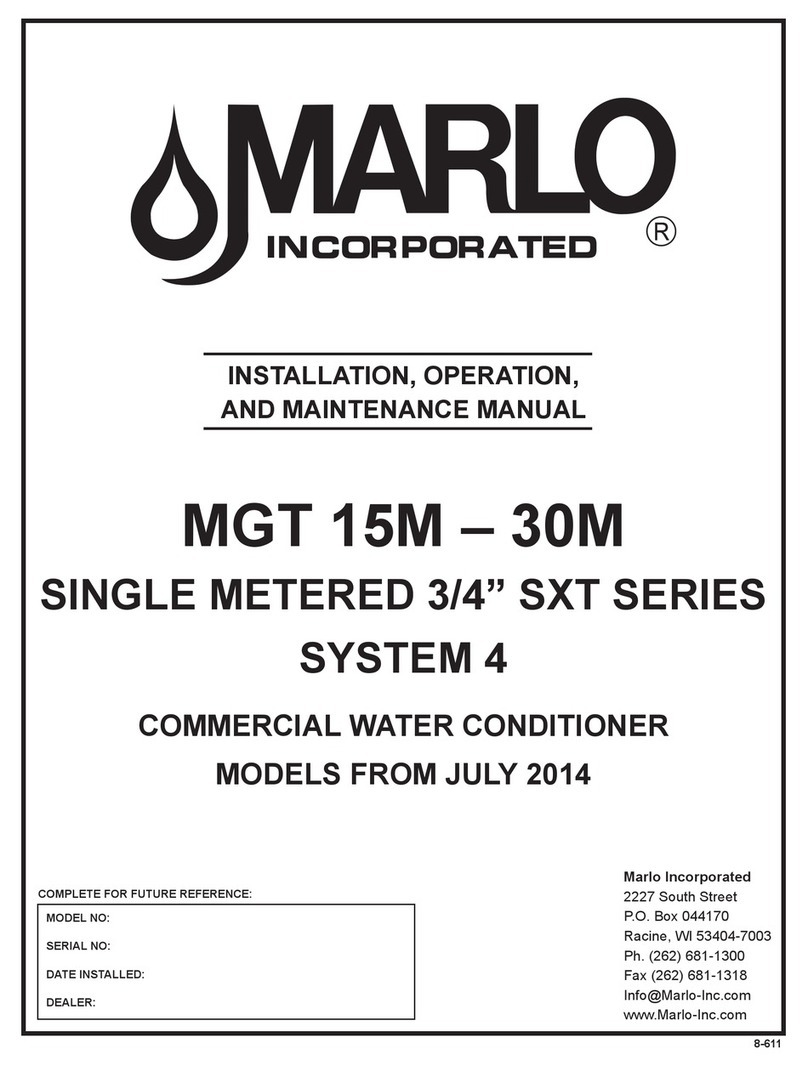
MARLO
MARLO SXT Series Installation, operation and maintenance manual
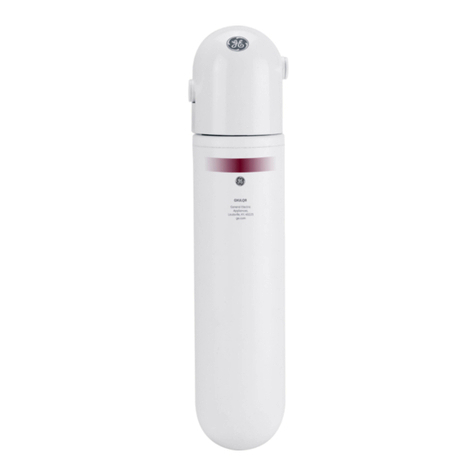
GE
GE GXULQ installation instructions
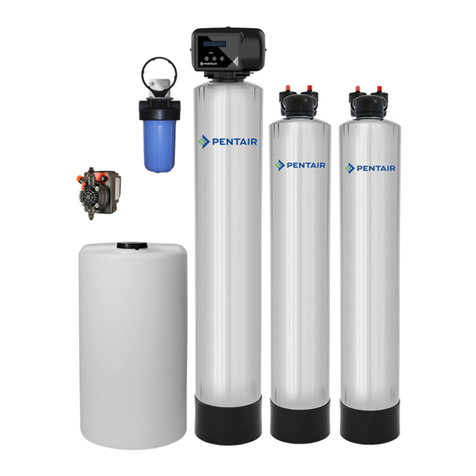
Pelican
Pelican WF6 owner's manual
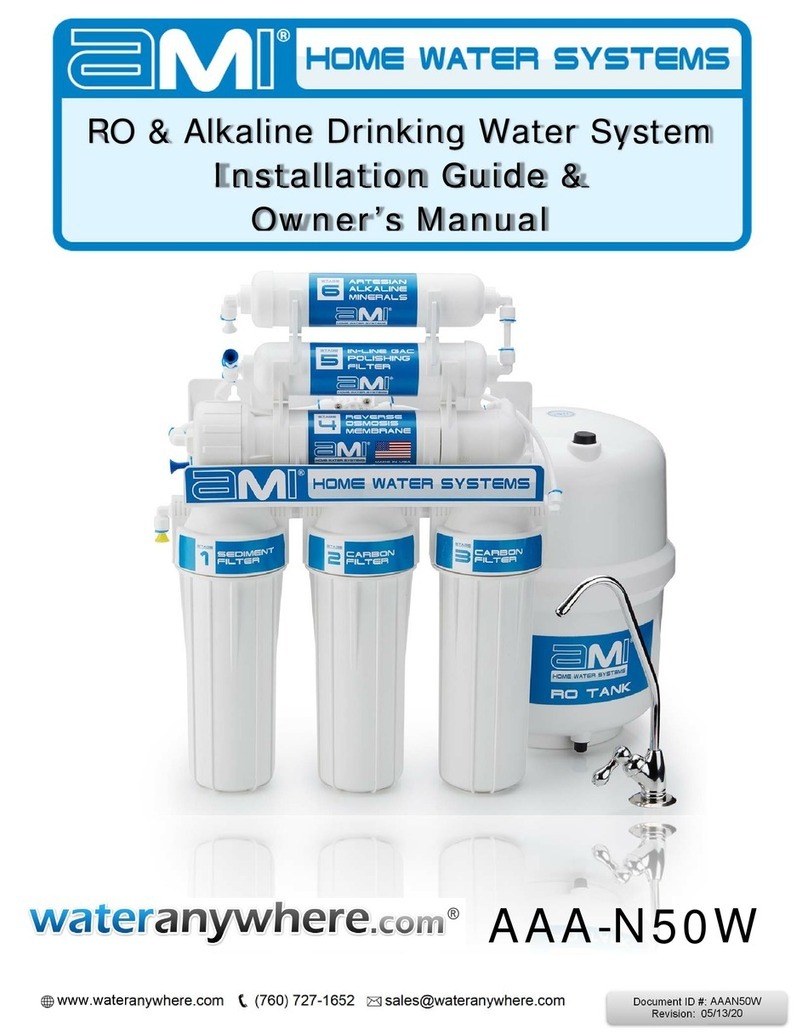
AMI
AMI AAA-N50W Installation guide & owner's manual

Bosch
Bosch TSS Series Installation and maintenance instructions
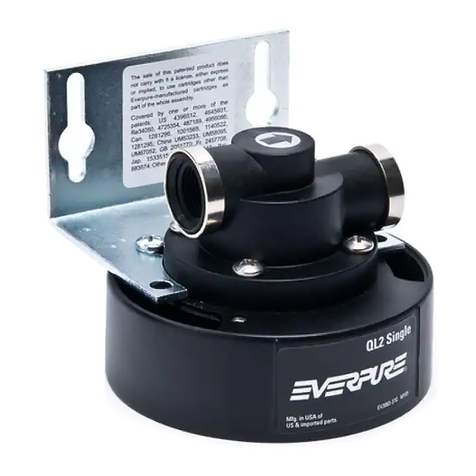
Everpure
Everpure QL2 Single Head EV9272-18 Specification sheet
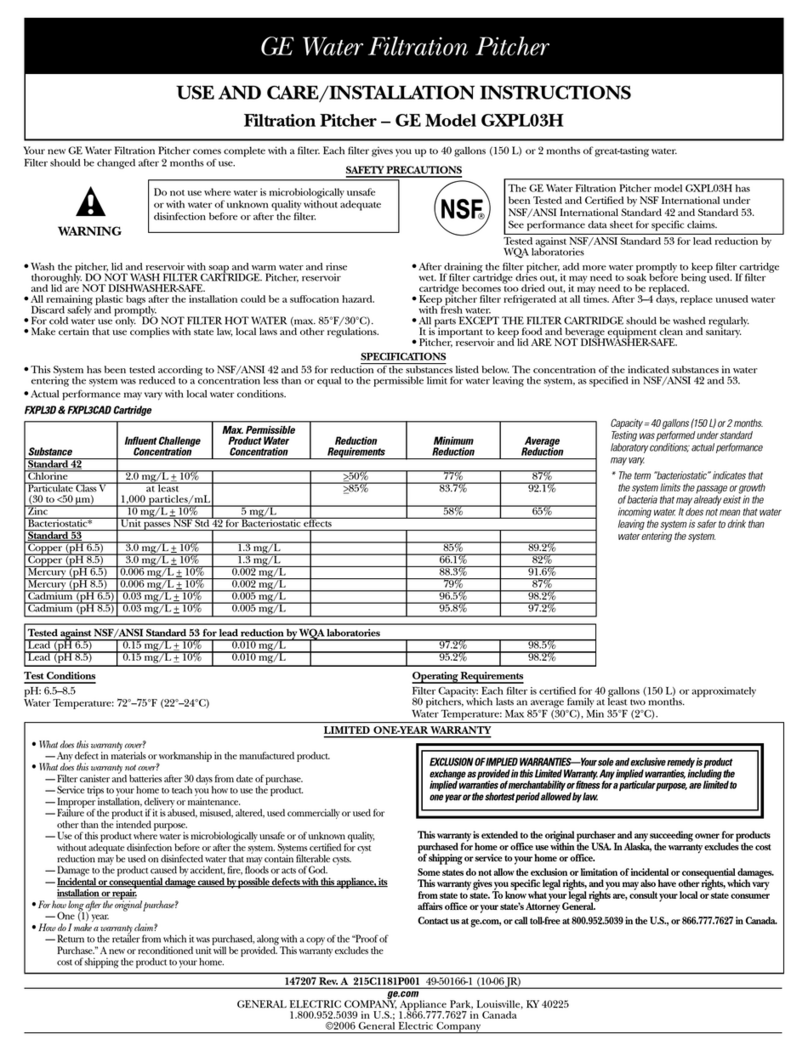
GE
GE GXPL03H Use and care and installation instructions

3M
3M Aqua-Pure AWS100M Installation and operating instructions

EOS
EOS Mill Wheel Mini Assembly and operating instruction
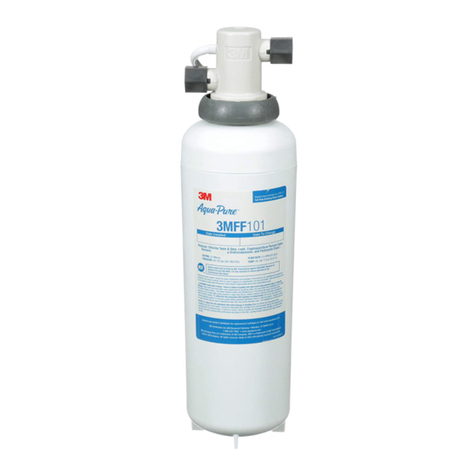
3M
3M Aqua-Pure Installation and operating instructions
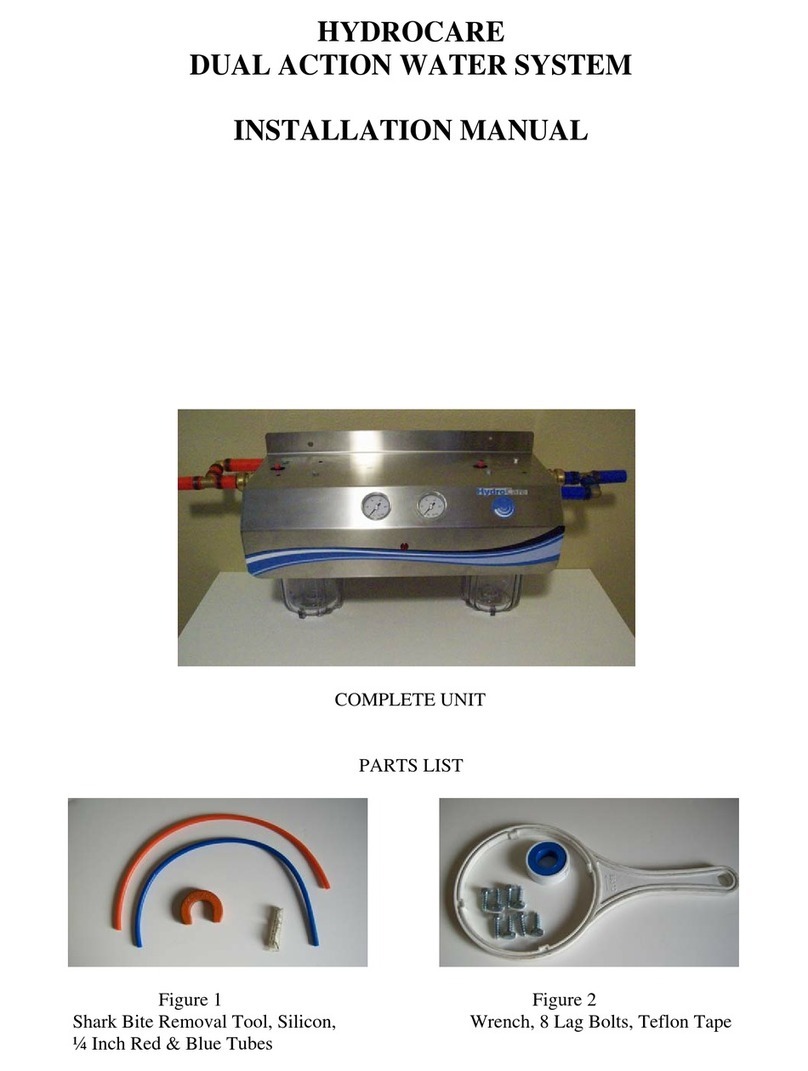
Wave Home Solutions
Wave Home Solutions HYDROCARE DUAL ACTION installation manual

EcoWater
EcoWater CHC Installation & service manual
